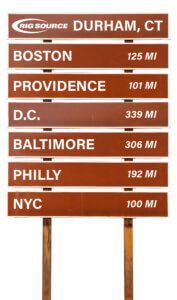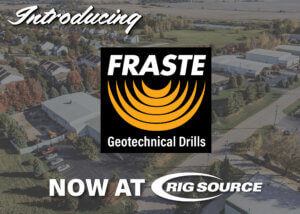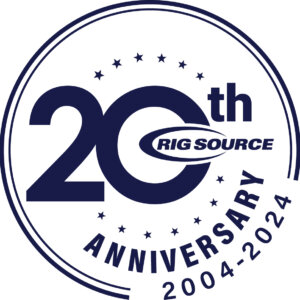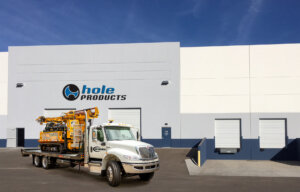When it comes to drilling operations, equipment and worker safety is one of the highest priorities for any successful project. These operations are the framework for project completion, but they have significant risks that require careful management. Adhering to strict safety standards and conducting risk assessments for each piece of equipment is necessary to ensure the safety of everyone involved on the site.
Safety Hazards Associated with Drilling Construction
In the world of construction, drilling operations introduce specific hazards that require attention and proactive management. A general overview of the common safety hazards include:
- Equipment malfunctions
- Falling objects
- Slips, trips, and falls
- Crashes
- Exposure to toxic or hazardous materials
- Extreme weather conditions
Equipment malfunctions can lead to unexpected downtimes or dangerous situations if not properly addressed. Falling objects are another frequent concern due to the risk of injury for construction workers operating or moving around the drilling rig. Slips, trips, and falls are also prevalent, especially in environments where the ground is uneven.
Beyond these, there are several hazards related to high-noise environments, vibration, and potential exposure to hazardous substances, all of which are common in construction work. Recognizing and understanding these risks are the first steps toward ensuring a safer working environment.
Addressing Risks to Maintain Workplace Safety
For construction companies that place a high priority on safety, it’s essential to address the risks associated with drilling. Complications with the equipment and falling objects can lead to serious injuries and harm. Ensuring that safety measures are in place and followed rigorously helps maintain the well-being of every individual on site and supports the smooth progression of construction projects.
Modern drilling rigs are designed with reliability and safety in mind. Drilling manufacturers constantly innovate to incorporate safety features that protect workers without compromising the rig’s performance. From automated safety systems that can prevent operator errors to physical barriers designed to protect workers from moving parts, the updates to this equipment reflect an industry-wide commitment to safety.
Rigorous testing and maintenance procedures also ensure that equipment remains in optimal condition, minimizing the risks of malfunctions that could lead to accidents. This highlights the importance of choosing a drilling rig that adheres to the highest standards of safety.
Key Safety Measures for Drilling Operations
Safety within drilling operations encompasses a wide range of precautions designed to protect workers at all times. Personal protective equipment is the first line of defense against onsite hazards. This includes hard hats or helmets, glasses, hearing protection, and other protective gear.
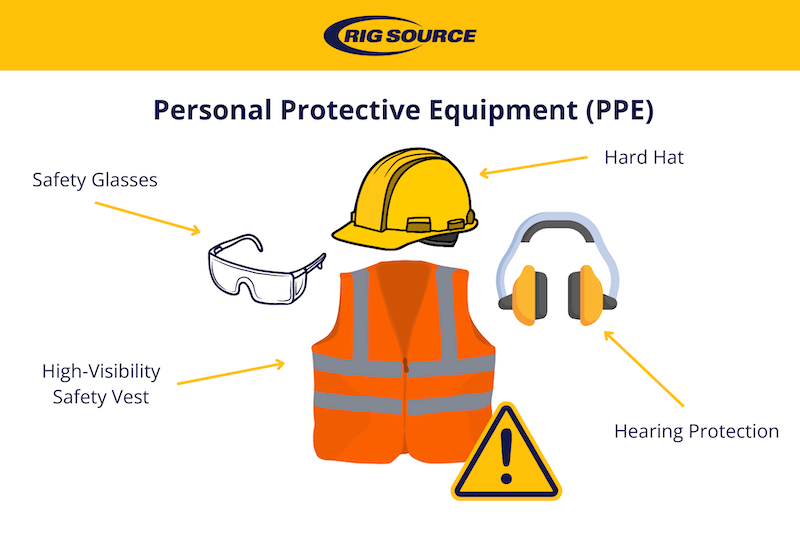
Fall protection systems are also important for operations at significant heights. This includes guardrails, ladder systems, rescue and descent systems, and more. They provide a safeguard against one of the most common construction-related accidents.
Safety Training Programs
Comprehensive safety programs are also valuable in creating a safe working environment for drilling operations. These programs equip personnel with the knowledge and skills necessary to navigate the hazards associated with drilling safely. Proper training covers the use of appropriate PPE, emergency response plans, hazard recognition, and the safe operation of drilling equipment. These safety precautions form the backbone of the strategy, aiming to minimize risks and build a culture of safety on the job site.
Regular Equipment Checks and Maintenance
The integrity of drilling projects is heavily reliant on the condition of the equipment used. Regular checks and routine maintenance are crucial for identifying and correcting potential problems before they lead to unsafe conditions. These inspections cover a wide range of equipment aspects, from the mechanical functions to the safety features, ensuring every component operates as intended. A few steps to completing a comprehensive equipment check include:
- Look for signs of wear and tear on the tools
- Check the drill fluid levels
- Ensure the machine is compliant with safety standards
- Test all parts of the equipment to make sure it works correctly
Preventative maintenance extends the lifespan of the drilling rigs and reduces the likelihood of equipment failures that could present safety concerns.
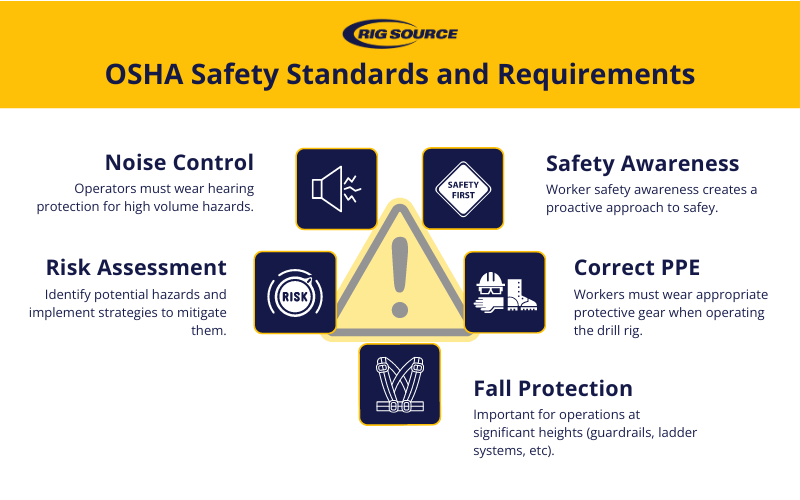
Adhering to Construction Safety Standards and Regulations
Following the standards set by the Occupational Safety and Health Administration (OSHA) is fundamental to maintaining safety in construction activities and operations. OSHA standards provide a comprehensive framework for managing the potential hazards of drilling. Specific regulations cover a range of safety requirements:
- Noise control
- Risk assessment
- Fall protection
- Correct use of personal protective equipment
- Worker safety awareness
Safety Standards
Adhering to safety rules and standards is not just a matter of legal compliance; it’s an important component of protecting everyone involved in the operation. These guidelines are the result of years of industry experience and are designed to minimize risks and prevent accidents before they happen. By adhering to these established protocols, companies demonstrate their commitment to the well-being of their employees and the integrity of their projects.
Risk Assessments
Conducting a thorough risk assessment before beginning any operation is crucial for identifying potential hazards and implementing strategies to mitigate them. Developing and executing comprehensive safety plans tailored to each specific project ensures that all possible risks are accounted for and addressed.
Training for Operators
Training is another best practice for drilling operators and other construction personnel. This provides team members with the skills to perform their tasks safely and efficiently. Together, these practices create a proactive approach to safety. It emphasizes prevention, preparedness, and continuous training to protect the safety of everyone involved.
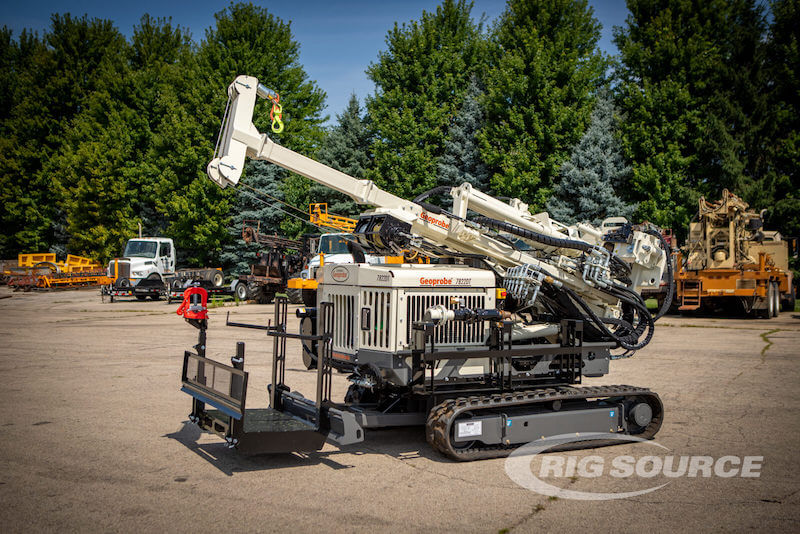
Advancements in Drilling Equipment for Safety
Technological advancements in drilling equipment are significantly enhancing construction site safety. Some of these advancements include:
- Automated drilling rigs
- Real-time monitoring and analytics
- Advanced drilling fluids
These innovations offer a level of precision and control that was previously unattainable, reducing the reliance on manual operations prone to human error. Automated rigs can perform complex drilling tasks with high accuracy, minimizing the risk of accidents caused by operational mistakes. Safety features play a role in monitoring equipment performance and alerting personnel of potential safety issues before they escalate into an accident. This technology not only streamlines operations but also increases the overall safety of drilling projects and ensures that risks are managed more effectively.
Reducing Human Error and Enhancing Efficiency
The integration of advanced technology into drilling operations reduces human error, one of the primary sources of accidents in the construction industry. By automating repetitive and high-precision tasks, this technology minimizes the chances of mistakes that can lead to injuries or project delays.
These solutions also enhance efficiency, allowing projects to progress smoothly while maintaining a focus on safety. For project managers and safety professionals, technology offers tools for better oversight and management of safety procedures.
Rig Source’s Commitment to Safety in Drilling Operations
Rig Source is a leader in the drilling industry, known for our trusted reputation and 100+ years of experience. With a foundation built on expertise and a client-focused approach, we deliver solutions that meet the needs of each drilling project, ensuring that safety and efficiency are always a priority.
We understand that the success of drilling projects depends on the reliability and condition of the drill rigs used. Each piece of drilling equipment in our fleet goes through extensive maintenance and rigorous testing to ensure it operates safely and correctly. This commitment not only demonstrates our dedication to safety but also our desire to provide our clients and their teams with the best possible tools for the projects.
Whether it’s our used drill rigs for sale or our selection of rental rigs, we always uphold the highest standards of safety in the industry. Reach out to Rig Source today to experience the difference that well-maintained, rigorously tested drilling equipment can make for your project outcomes.
Resources:
- “Going Beyond the Basics: International Drilling Equipment’s Commitment to Safety.” LinkedIn: International Drilling Equipment. https://www.linkedin.com/pulse/going-beyond-basics-international-drilling/
- “Innovations in Drilling Technology.” Petroleum Engineers Association. https://www.linkedin.com/pulse/innovations-drilling-technology-petroleum-engineers-association
- Occupational Safety and Health Administration. https://www.osha.gov/
- Rig Source. http://rigsourceinc.com/
- The Driller. https://www.thedriller.com/

